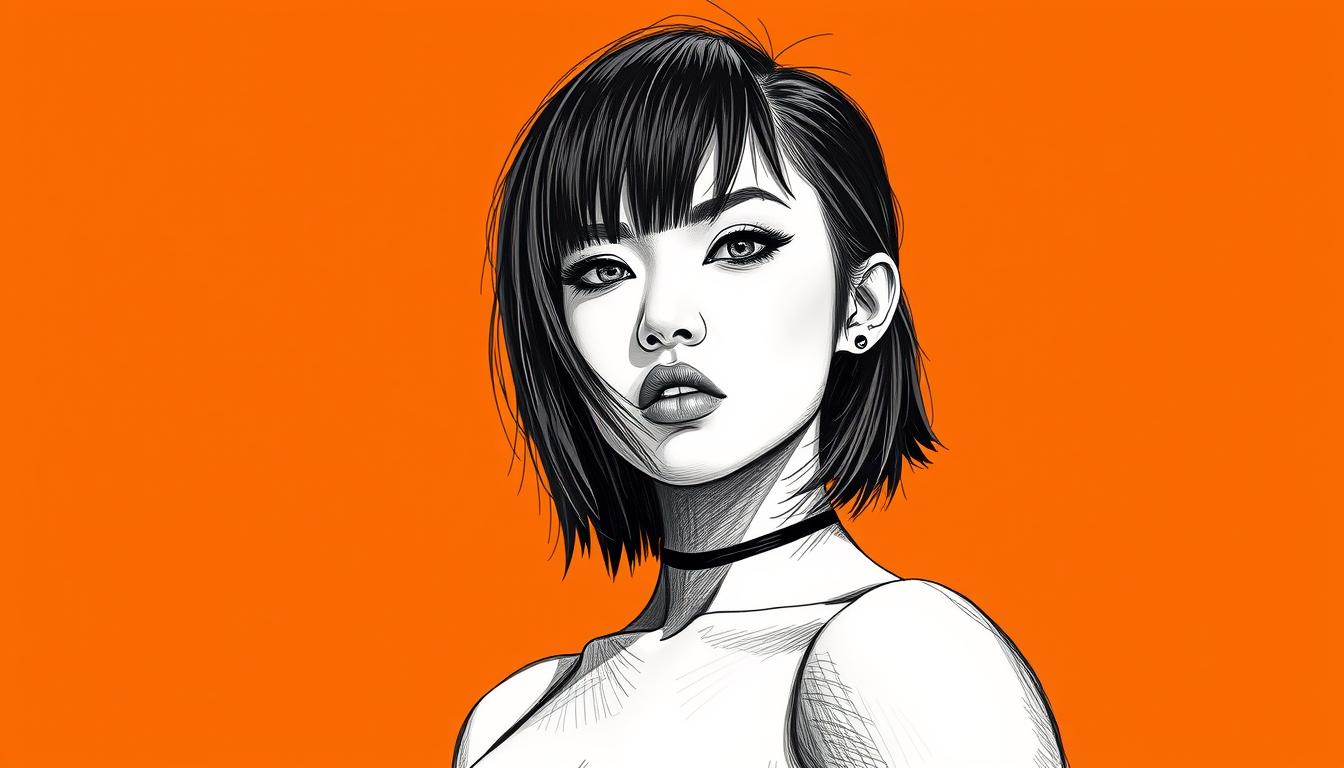Rina Sawayama bridges worlds through her music. Born in Japan and raised in London from age five, she creates art that honors both cultures. Her journey reflects the complex experience of growing up between traditions.
The artist recently made news by speaking out against cultural misrepresentation. She called out a high-profile performance that mishandled Japanese traditions. This moment connects to her larger fight for respect and authenticity in the music industry.
At 35, she stands as both pop innovator and cultural guardian. Her path from immigrant child to Vogue Japan honoree shows remarkable growth. She refuses to stay silent when respect falls short, using her platform for meaningful change.
Background, Influences, and Career Milestones
The blueprint for her pop career emerged from observing both the triumphs and missteps of industry giants. Her approach to music combines admiration with critical awareness.
Early Life and Japanese-British Heritage
Growing up between cultures shaped her artistic perspective. This dual heritage informed how she interprets pop traditions.
She brings personal experience to cultural representation. This lived understanding separates her work from superficial borrowing.
Musical Inspirations from Pop Icons
Britney Spears, Gwen Stefani, and Lady Gaga provided early templates for stardom. Their theatrical performances influenced her stage presence.
But she learned cautionary lessons too. Stefani’s Harajuku phase demonstrated the line between appreciation and appropriation.
Her album work reflects these filtered influences. She carries forward boldness while adding cultural accountability.
| Artist | Cultural Approach | Influence Type | Lesson Learned |
|---|---|---|---|
| Britney Spears | Mainstream Pop | Theatrical Performance | Stage Presence |
| Gwen Stefani | Japanese Imagery | Visual Concepts | Cultural Sensitivity |
| Lady Gaga | Avant-Garde | Artistic Boldness | Creative Risk |
| Rina Sawayama | Lived Experience | Authentic Integration | Accountability |
Over time, these influences merged into a unique sound. The artist transformed inspiration into original expression.
She became a star by honoring roots while innovating. This balance defines her contribution to pop music.
Rina Sawayama and Cultural Respect in Music
A Saturday Night Live performance sparked conversation about how artists handle cultural symbols. The moment involved traditional Japanese elements used in a modern pop context.
Sawayama addressed the situation with clarity and purpose. She highlighted the importance of understanding cultural significance before incorporating traditions into performances.
Critique of Sabrina Carpenter’s SNL Performance
The performance featured a “tatami jail” set piece with traditional Japanese flooring. Sawayama noted the cultural misstep of wearing shoes on the delicate tatami mats.
This wasn’t about attacking the artist personally. It was about calling attention to a pattern of cultural borrowing without proper research.
The Importance of Research in Cultural References
Tatami mats carry deep cultural meaning in Japanese tradition. They date back to 300 BC and are woven from igusa plant fibers.
These mats are designed for sacred spaces and meditation. Stepping on them with shoes violates both preservation customs and spiritual respect.
Artists and creative teams have a responsibility when referencing other cultures. Basic research can prevent meaningful traditions from becoming mere stage props.
Sawayama’s message emphasized that respect matters more than visual impact. Her critique wasn’t about perfection but about showing genuine effort.
Music, Style, and Public Reactions
Sabrina Carpenter’s SNL hosting debut was engineered for maximum viral impact. The performance blended music, comedy, and controversy in one packed show.
Martial Arts Themes and Stage Aesthetics
Carpenter’s team designed multiple moments for social media traction. Her single “Manchild” featured dynamic choreography with her dancers.
The stage included a “tatami jail” set piece that became central to the news cycle. This aesthetic choice overshadowed other planned surprises.
Audience and Peer Response to Creative Choices
Viewers noticed Carpenter referencing her “Man’s Best Friend” album cover debate. She leaned into existing controversies surrounding her work.
Her playful jab at Taylor Swift’s “The Fate Of Ophelia” showed comfort using friendships for comedy. But the cultural misstep dominated post-show discussions.
Impact on Popular Culture and Ongoing Debates
The incident highlighted how cultural errors overshadow strong musical guest appearances. Rina Sawayama’s response added to industry conversations about respect.
People now expect artists to demonstrate cultural competence beyond visual creativity. These debates continue shaping how teams approach traditions in performance concepts.
Looking Forward: Legacy, Impact, and Future Directions
Her legacy is built as much on principle as on pop music. From calling out racism at Glastonbury to highlighting the “tatami jail” misstep, Rina Sawayama consistently demands better.
This stance has personal costs. Her public disagreement strained a friendship with fellow artist Charli XCX. They resolved it over time, a reminder that advocacy within complex industry relationships is challenging.
Now, her next album remains trapped by label conditions she finds untenable. Yet her impact grows. She pushes artists and their creative teams to prioritize cultural research and respect.
Her future influence extends beyond her own music. It lives in the conversations she starts. Sawayama champions a simple idea: true love for the craft includes love for the cultures it touches.




